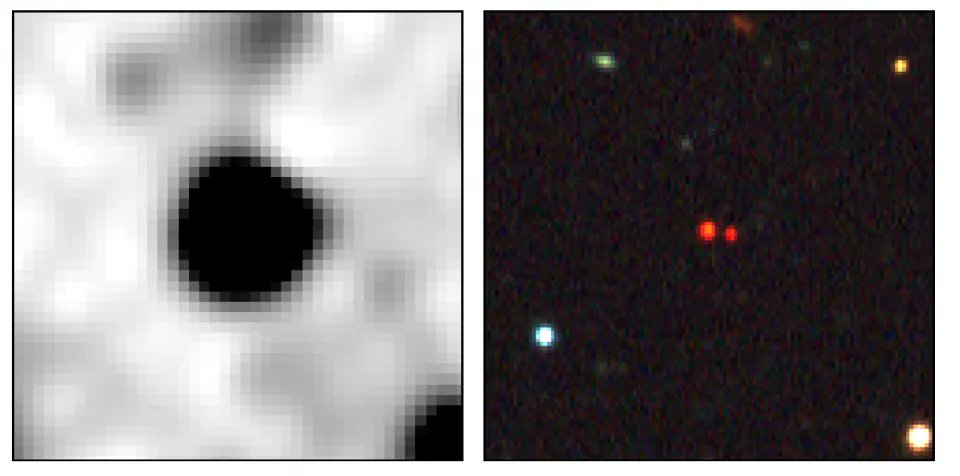Gravity is a funny force. The gravity of every given object technically impacts every other given object, though, in practice, large distance and small masses make those forces negligible for such interactions. But in some cases, especially when large groups are floating in empty space, gravity can still hold sway over considerable distances. Such is the case with a new pair of brown dwarfs found by astronomers at the Keck Observatory.
Those brown dwarves are paired to each other, but the distance between them is 12 billion miles – 3 times the distance of Pluto to the Sun. The system, called CWISE J014611.20-050850.0AB, was discovered using observations made by UC San Diego’s Cool Star Lab. Observations were completed with the Near-Infrared Echellete Spectrometer (NIRES) instruments.
Credit – Paul Sutter YouTube Channel
Infrared surveys are particularly good at detecting brown dwarves, as they emit heat rather than light. In the case of CWISE J014611.20-050850.0AB it was even more critical than usual. “Keck’s exceptional sensitivity in the infrared with this instrument was critical to our measurements. The secondary brown dwarf of this system is exceptionally faint…” said study co-author and UCSD Physics professor Adam Burgasser, but they were able to differentiate it with Keck.
To know where to look, they first utilized another tool – the Wide-field Infrared Survey Explorer (WISE), which has already discovered many brown dwarfs. An associated citizen science project called Backyard Worlds: Planet 9 typically searches WISE databases for hints of brown dwarfs. The researchers took a look at 3,000 separate brown dwarfs discovered by Backyard Worlds and cross-referenced them with data from the Dark Energy Survey, another tool that had observed that part of the sky.
Credit – NASA Goddard YouTube Channel
Keck’s observations solidified the finding, even so far away as it is. The researchers stress the importance of finding unique binary systems to help inform models of how exactly brown dwarf binaries are formed and estimate how many of them might be out there. There are sure to be plenty more where CWISE J014611.20-050850.0AB came from.
Learn More:
Keck Observatory – Astronomers Discover Widest Separation Of Brown Dwarf Pair To Date
Space.com – Rare double brown dwarf eclipse spotted in surprise discovery
JPL – An Accidental Discovery Hints at a Hidden Population of Cosmic Objects
UT – Astronomers Capture a Direct Image of a Brown Dwarf
Lead Image:
Image of the system in question from WISE (left) and the Dark Energy Survey (right).
Credit – WISE / DES / Softich et al.

